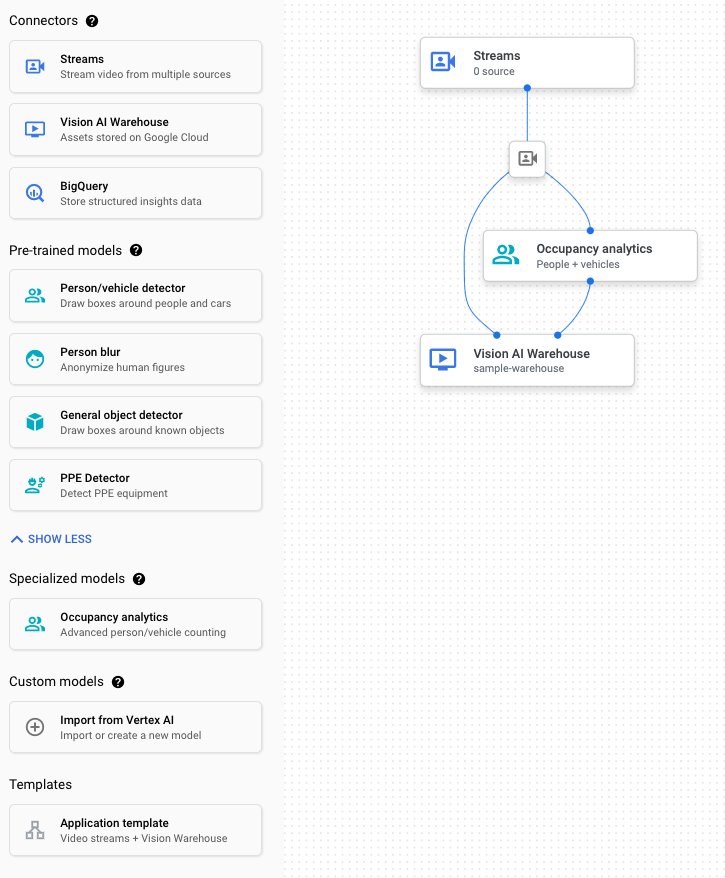Vertex AI Vision is an AI-powered platform to ingest, analyze and store video data. Vertex AI Vision lets users build and deploy applications with a simplified user interface.
Using Vertex AI Vision you can build end-to-end computer image solutions by leveraging Vertex AI Vision's integration with other major components, namely Live Video Analytics, data streams, and Vision Warehouse. The Vertex AI Vision API allows you to build a high level app from low level APIs, and create and update a high level workflow that combines multiple individual API calls. You can then execute your workflow as a unit by making a single deploy request to the Vertex AI Vision platform server.
Using Vertex AI Vision, you can:
- Ingest real-time video data
- Analyze data for insights using general and custom vision AI models
- Store insights in Vision Warehouse for simplified querying and metadata information
Vertex AI Vision workflow
The steps you complete to use Vertex AI Vision are as follows:
Ingest real-time data
Vertex AI Vision's architecture allows you to quickly and conveniently stream real-time video ingestion infrastructure in a public Cloud.
Analyze data
After data is ingested, Vertex AI Vision's framework provides you with easy access and orchestration of a large and growing portfolio of general, custom, & specialized analysis models.
Store and query output
After your app analyzes your data you can send this information to a storage destination (Vision Warehouse or BigQuery), or receive the data live. With Vision Warehouse you can send your app output to a warehouse that generalizes your search work and serves multiple data types and use cases.

A note on Responsible AI
At Google Cloud, we prioritize helping customers safely develop and implement solutions using Vertex AI Vision. For Vertex AI Vision, we've worked to develop fair and equitable performance in accordance with Google's AI Principles.
This work includes testing for bias during development, for example looking at performance across different skin tones, and developing product features to enhance privacy and limit personal identification, like person and face blur. We are committed to iterating and improving, and we will continue to incorporate best practices and lessons learned into our Vertex AI products.
When Vertex AI Vision is integrated into a customer's unique organizational context, there are likely to be additional responsible AI considerations. We encourage customers to leverage fairness, interpretability, privacy and security best practices when implementing Vertex AI Vision, especially when building custom or AutoML trained models. Throughout this technical documentation, we have provided additional guidance and resources to support this work. To learn more, read about Google's recommendations for Responsible AI practices.
What's next
- Read more in the blog post "Vertex AI Vision: Easily build and deploy computer vision applications at scale".
- Learn details about specific models in the Occupancy analytics guide, Person blur guide, Person/vehicle detector guide, or Motion filtering guide.
- Try Vertex AI Vision in the Google Cloud console by reading the Build an app in the console quickstart.
- Set up your local environment to use Vertex AI Vision.
